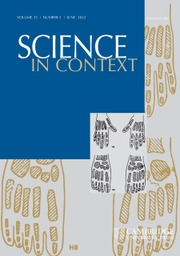Article contents
Empathy in Translation: Movement and Image in the Psychological Laboratory
Published online by Cambridge University Press: 24 July 2012
Argument
The new English term “empathy” was translated from the German Einfühlung in the first decade of the twentieth century by the psychologists James Ward at the University of Cambridge and Edward B. Titchener at Cornell. At Titchener's American laboratory, “empathy” was not a matter of understanding other minds, but rather a projection of imagined bodily movements and accompanying feelings into an object, a meaning that drew from its rich nineteenth-century aesthetic heritage. This rendering of “empathy” borrowed kinaesthetic meanings from German sources, but extended beyond a contemplation of the beautiful to include a variety of experimental stimuli and everyday objects in the laboratory. According to Titchener's structural psychology, all higher thought could be reduced to more elemental aspects of mind, and experimental introspection showed empathy to be constituted of kinaesthetic images. The existence of kinaesthetic images, Titchener argued, formed an incisive critique of the view that thought could take place without images, held by one of Titchener's major psychological rivals, the school of thought-psychologists in Würzburg, Germany. The new term “empathy” in early American academic psychology therefore delineated a kinaesthetic imaginative projection that took place on the basis of ontological difference between minds and things.
Information
- Type
- Research Article
- Information
- Science in Context , Volume 25 , Issue 3: The Varieties of Empathy in Science, Art, and History , September 2012 , pp. 301 - 327
- Copyright
- Copyright © Cambridge University Press 2012
References
References
- 32
- Cited by

